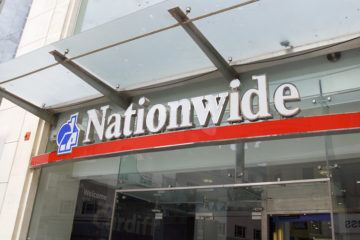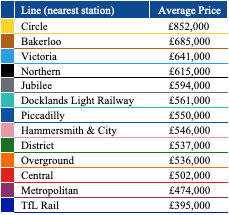UK house price growth continues, as Nationwide publishes June House Price Index
The June 2021 House Price Index from Nationwide states that annual house price growth has now increased above 13%, with all UK regions recording a pickup in Q2.
The highlights of the report include:
- Annual house price growth has increased to 13.4%, the highest level since November 2004
- Prices are up 0.7% month-on-month, after taking account of seasonal factors
- Northern Ireland has seen the strongest growth in Q2, Scotland the weakest, closely followed by London
Colby Short, Founder and CEO of GetAgent.co.uk, commented: “Properties are going under offer at an alarming pace at the moment and buyers continue to swarm the market despite the dwindling hopes of a Stamp Duty reprieve. There also remains a severe shortage of stock to meet this demand and so sellers are achieving a very good price for their property, often at, or in excess of the original asking price.
“While a reduction in buyer demand is expected towards the back end of this year, the scales will remain firmly tipped in favour of sellers due to the imbalance between supply and demand and so we should see a buoyant level of property price appreciation remain for the duration of the year.”
Marc von Grundherr, Director of Benham and Reeves, commented: “We’re currently seeing huge rates of house price growth not seen since some time before the last property market crash. There’s no end in sight where this current market performance is concerned, despite some having predicted a market slump on and off since the pandemic first started.
“It’s important to remember that while the market did show signs of slowing down as we approached the original Stamp Duty deadline, we’re now looking at a very different market altogether.
“People are returning to work and life is gradually returning to a greater sense of normality and so the stimulation of a Stamp Duty saving is no longer required in order to maintain market activity.
“London, in particular, is showing strong signs of a shift in momentum across both the rentals and sales market. This is being driven by a realisation that we can’t work from a secluded countryside bolthole forever and now that we are returning to the workplace, a lengthy commute on a stuffy train is no longer as manageable when it’s required five days a week instead of one or two.”
James Forrester, Managing Director of Barrows and Forrester, commented: “The Stamp Duty holiday isn’t the be-all and end-all where homeownership is concerned and it certainly isn’t the primary factor causing buyers to enter the market at mass. So its tapered expiry is unlikely to cause current levels of market activity to evaporate overnight.
“Once both the initial and extended deadlines have expired, the fires of buyer demand will continue to be stoked by the availability of 95% mortgage products and very low interest rates. Of course, there will be some period of natural market realignment after such a sustained period of manic activity, but we’re worlds away from seeing a property market crash.”
Matthew Cooper, Founder & Managing Director of Yes Homebuyers, commented: “It’s crunch time for the UK market and we can expect to see a far less positive outlook from here on out where house price appreciation is concerned.
“For far too long, homebuyers have been borrowing beyond their means and offering above the odds in a desperate scramble to secure a Stamp Duty holiday saving. Now that this is starting to slip through their fingers we will see a reduction in transaction levels and the inevitable decline in property prices that will soon follow.”
Lucy Pendleton, property expert at independent estate agents James Pendleton, comments: “The market has greeted a largely tax break-free world with an air of indifference that is bordering on animal spirits.
“The right properties are still selling very fast and there’s still not enough of them to meet demand. Stock levels are down while transactions are relatively high. This imbalanced cocktail is not just keeping prices where they are, it’s driving them on to ever dizzying heights. The result is that the average house price has surged £29,000 in 12 months which is a boon for consumer confidence among homeowners and a staggering rise.
“If the market was the slightest bit dependent on the Stamp Duty relief, a yawning gap would have opened up in the performance of the market over the past quarter but that chasm is entirely absent. The near-complete raising of the Chancellor’s drawbridge already feels like a distant memory.
“Even in London, which has been trailing the performance of the country at large recently, growth has jumped this quarter despite prices being significantly higher. The capital has shrugged off the withdrawal of Stamp Duty relief as confidence from buyers, who can almost smell the end of Covid restrictions, finally sense a return to normality. There’s a sense that this is now giving people the opportunity to make a longer-term commitment to the capital which is helping sales across all property types.
“As restrictions are eased, the only way is up for London which may not feel the chill of an expected autumn slowdown in quite the same way as the rest of the country.”
Iain McKenzie, CEO of The Guild of Property Professionals, says: “As the nation bites its fingernails ahead of England versus Germany, take solace in one battle with a predictable result – the relentless growth of the housing market.
“With only days to go until the deadline to take advantage of the Stamp Duty holiday in full, the market is seeing a last-minute scramble to complete sales.
“The 13% price rise compared to last June – the highest since 2004 – looks impressive, but it’s important to remember that this time last year the market was mired in lockdown.
“More noteworthy is the three consecutive months of price rises, and a sign of underlying consumer confidence and strength of the housing market.
“All parts of the UK have seen house prices increase, but the good news for many is that mortgage payments remain stable and affordable.”
David Westgate, group chief executive, Andrews Property Group, comments: “Buyers trying to take advantage of the extended Stamp Duty holiday and the race for more space are pushing house prices into the stratosphere.
“It’s starting to feel like prices are freewheeling with buyers snapping up properties, particularly those with generous outside space, as soon as they come onto the market.
“The end of the full Stamp Duty holiday tomorrow may see activity cool a little, but not significantly, as there are plenty of buyers who still have time and the motivation to complete before the tapered relief ends on 30th September.”
Nicky Stevenson, Managing Director at national estate agent group Fine & Country, comments: “The housing market continues to see an unconstrained rally which may well be going into overdrive as the economy continues to unlock.
“Annual house price growth of this magnitude is something no one thought they’d see, particularly with the Stamp Duty holiday now tapering out.
“Despite that additional cost to buyers, this remains a relatively frenzied market and desirable properties are not staying on the shelf for very long.
“The market is shifting away from short term factors to long term trends caused by the pandemic, which at first were totally underestimated in their influence and staying power.
“If the hunger for larger properties represents a permanent shift, and never reverts to its pre-pandemic norms, then a much-heralded snapping back of prices is going to prove rather elusive later this year.
“The final closure of the Stamp Duty scheme at the end of September may have no impact at all because other factors are so much more important, namely the race for space, low supply, accidental savings and low interest rates.
“London, too, shows signs it may finally be emerging from its slumber, and all eyes will be on the bright lights of the capital as offices and workspaces continue to re-open.”




